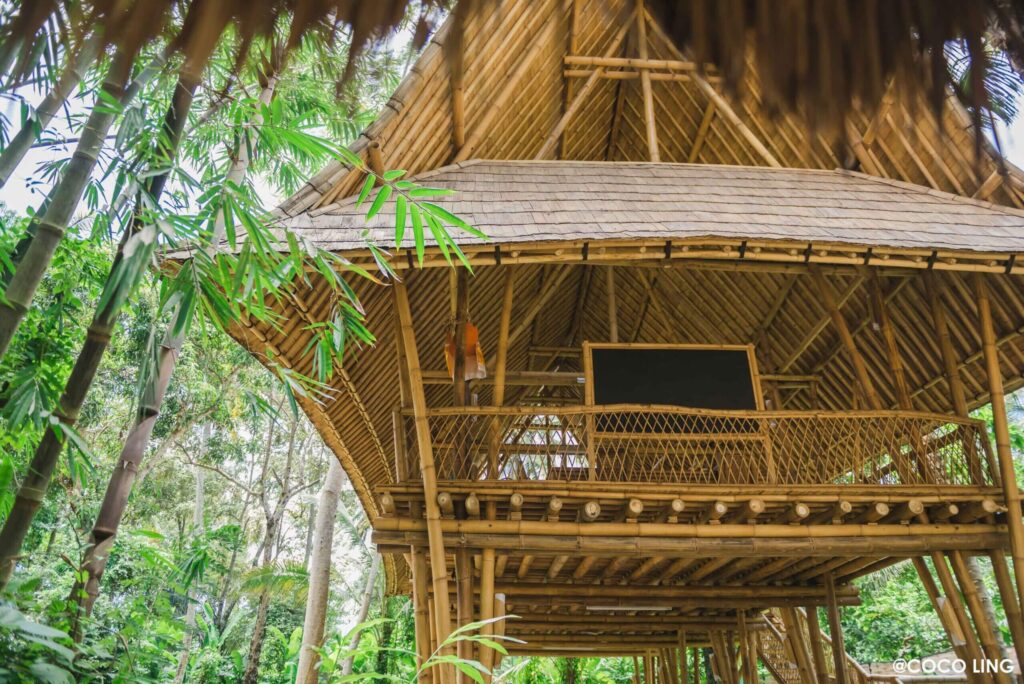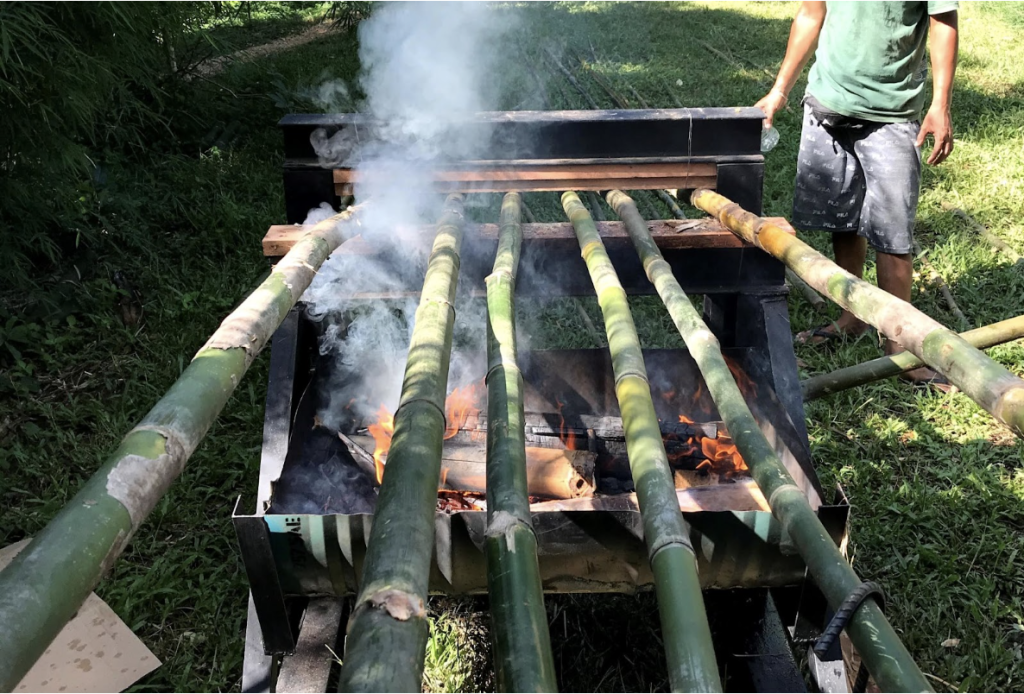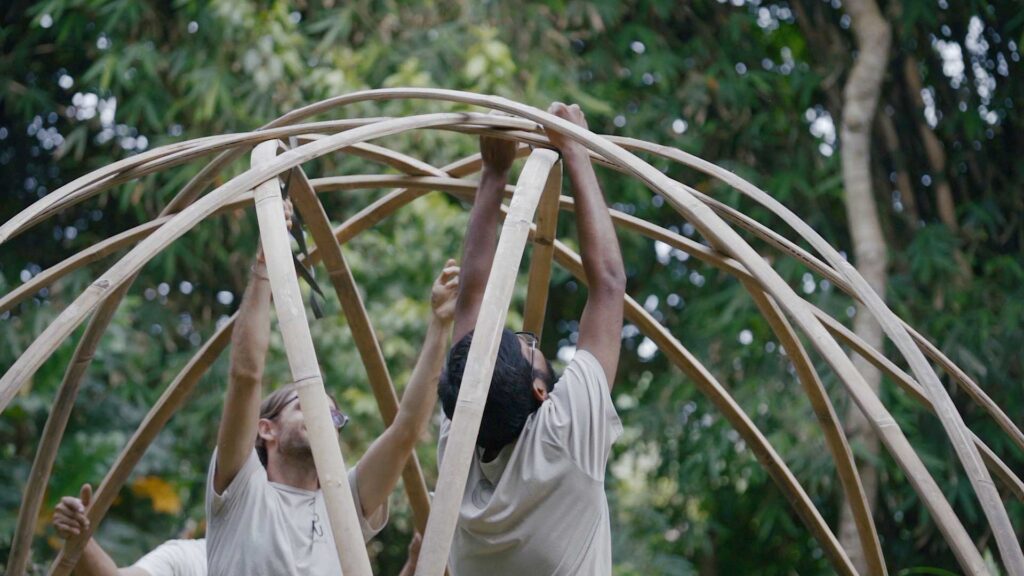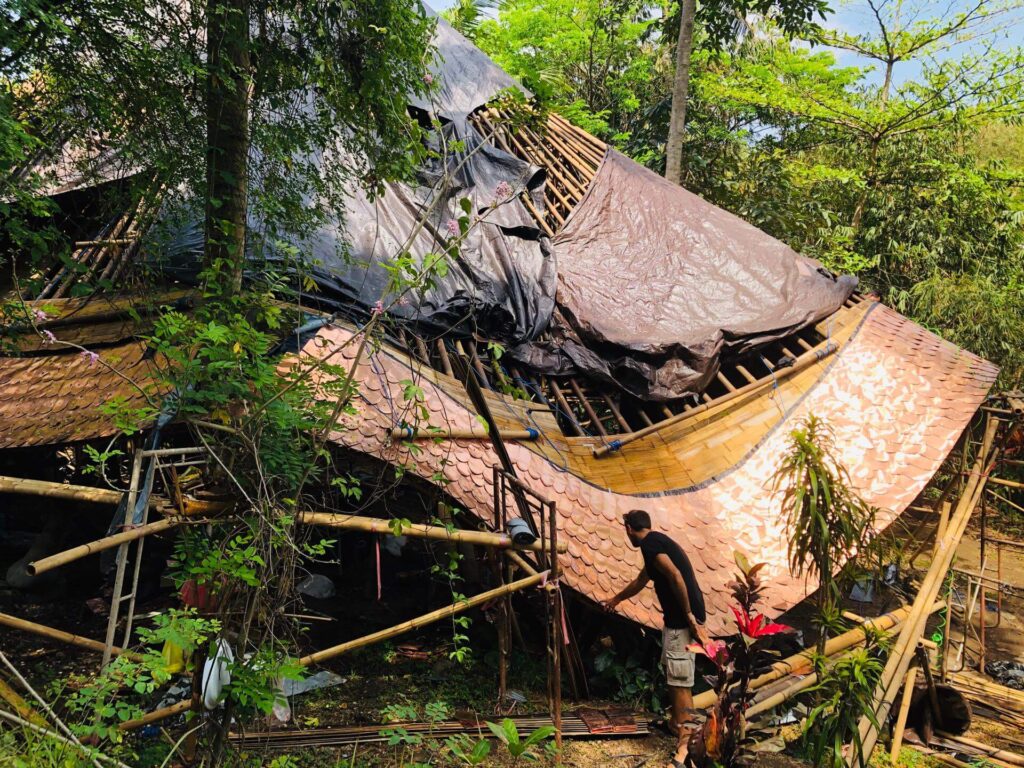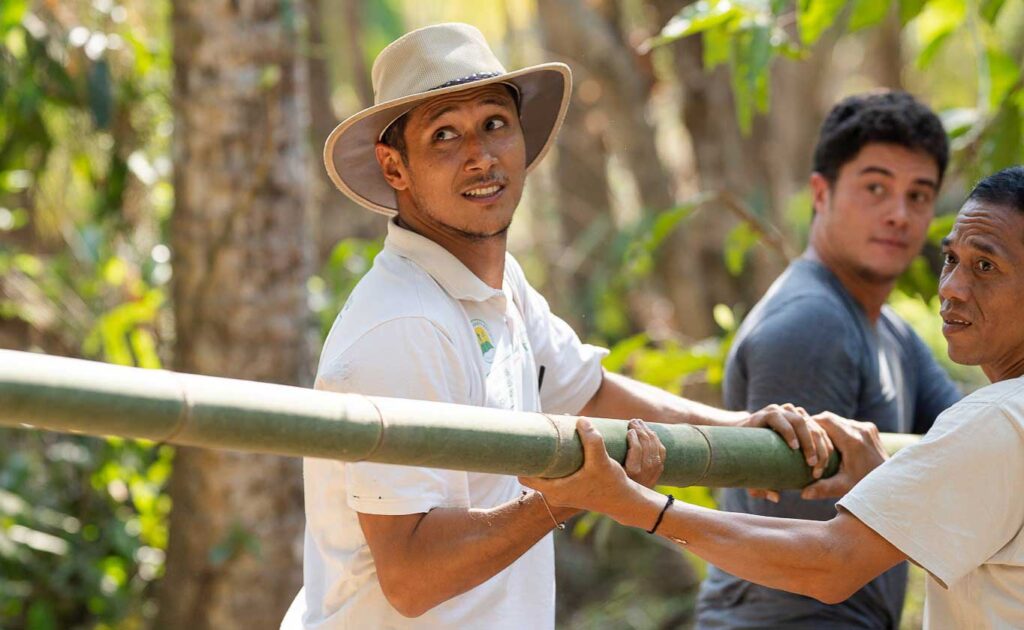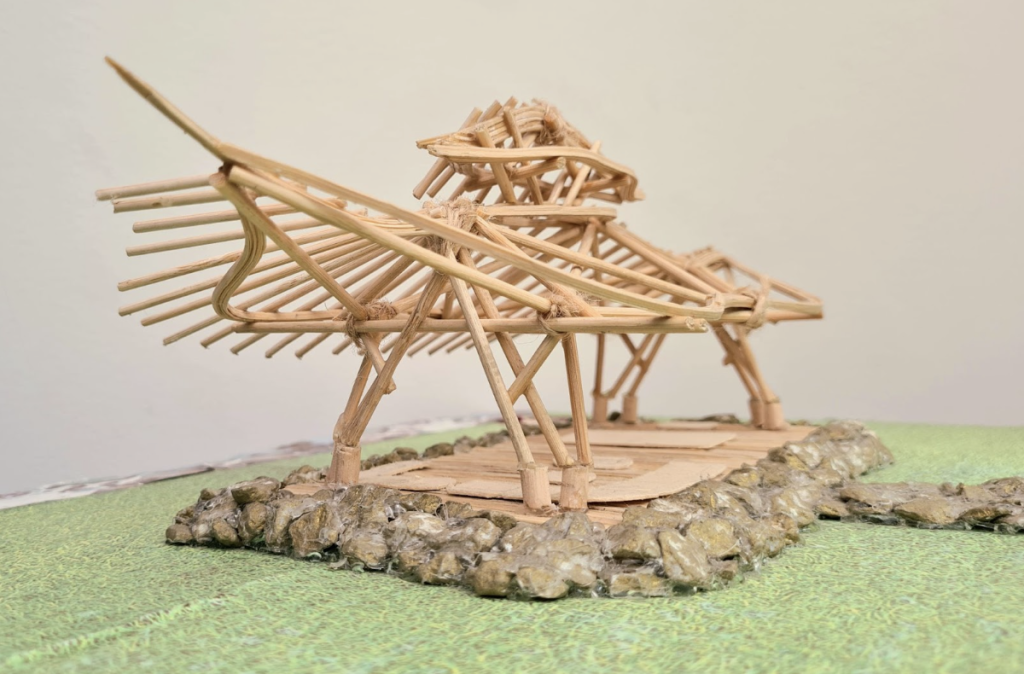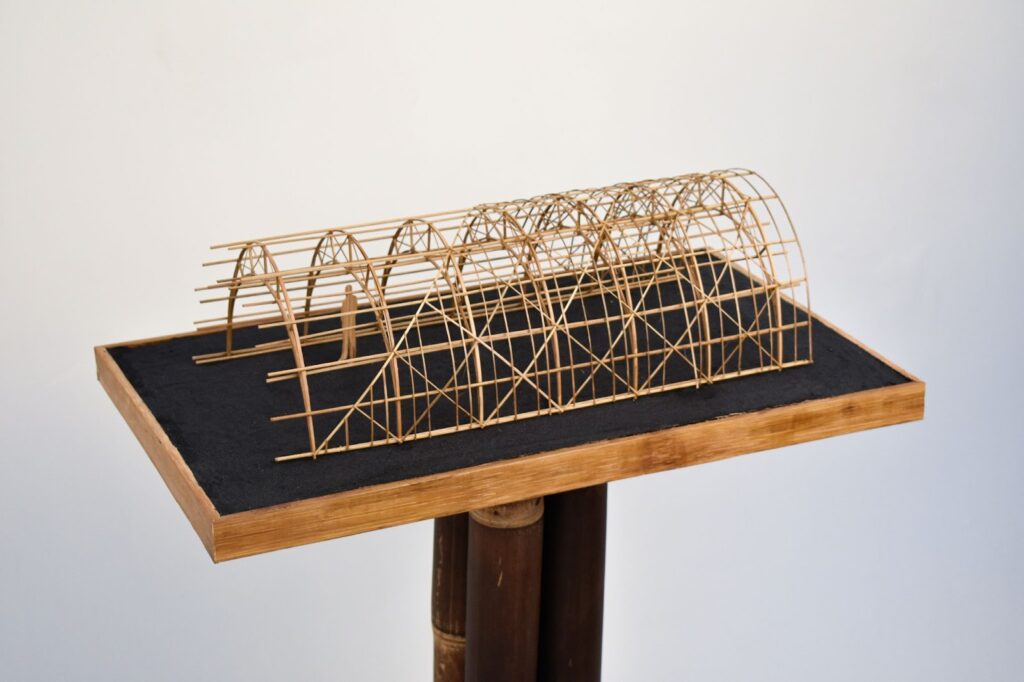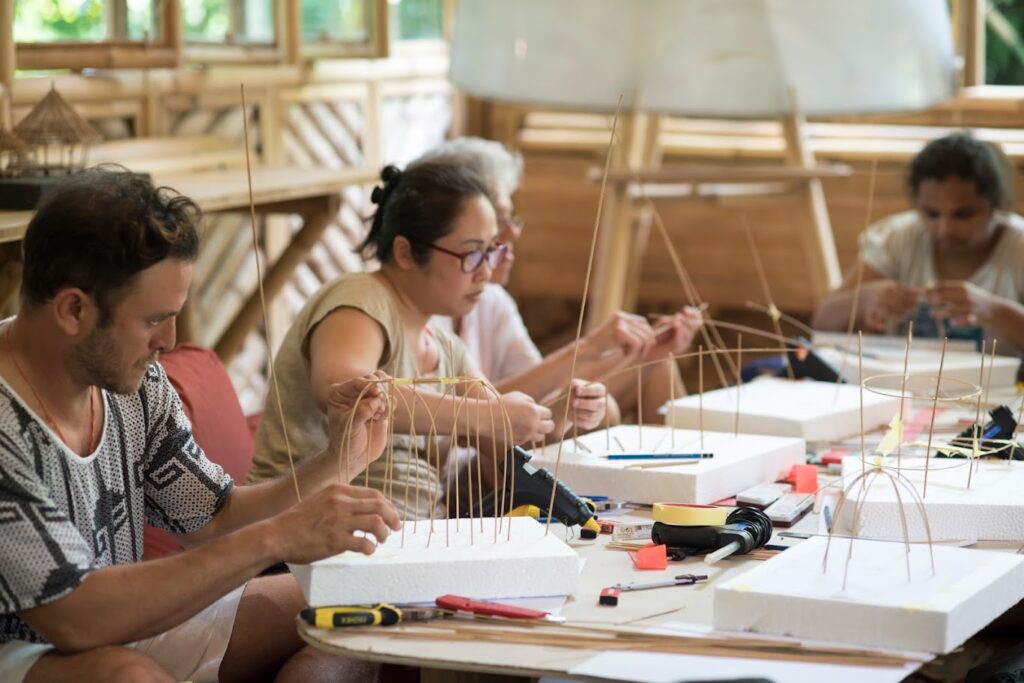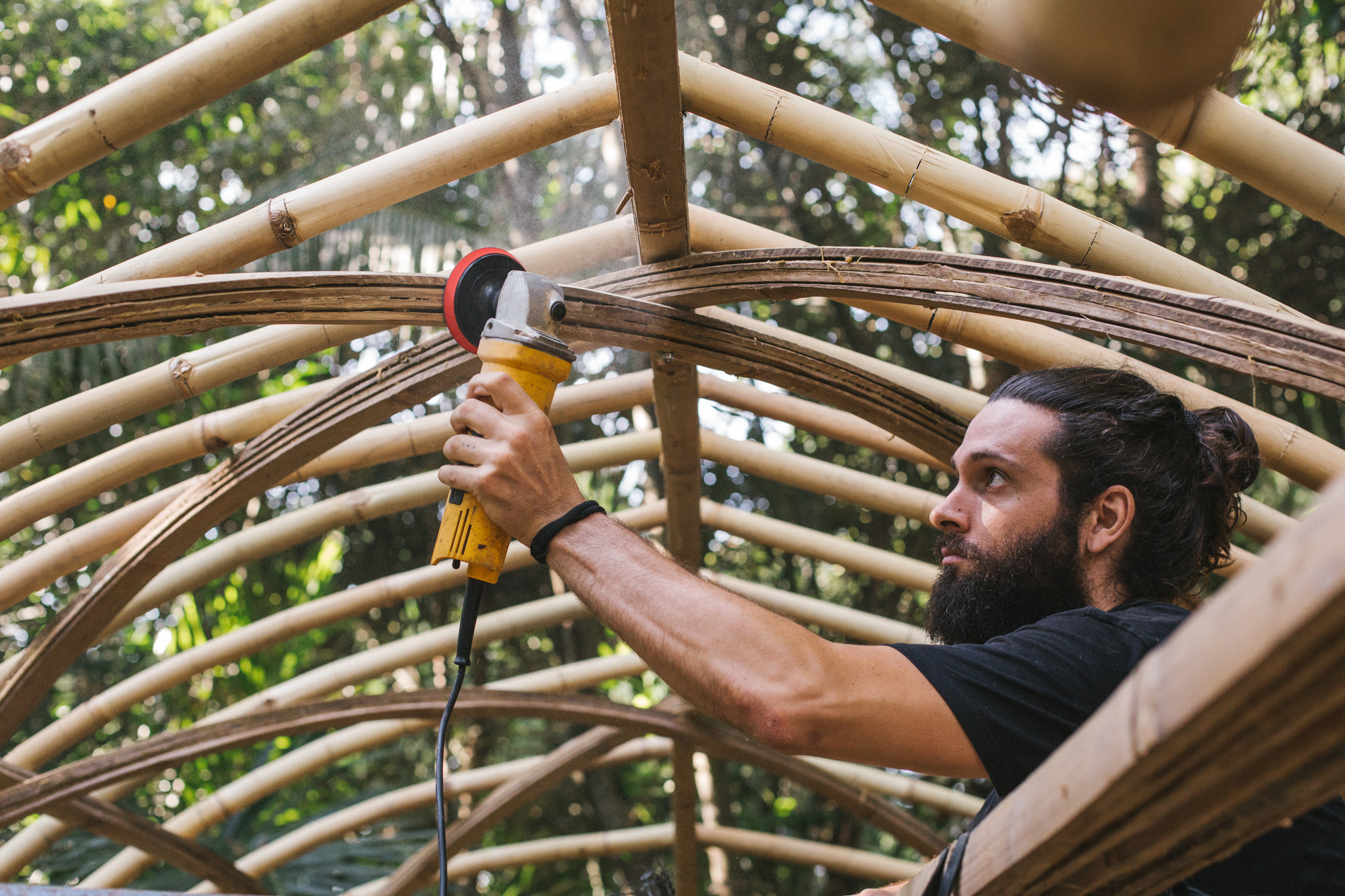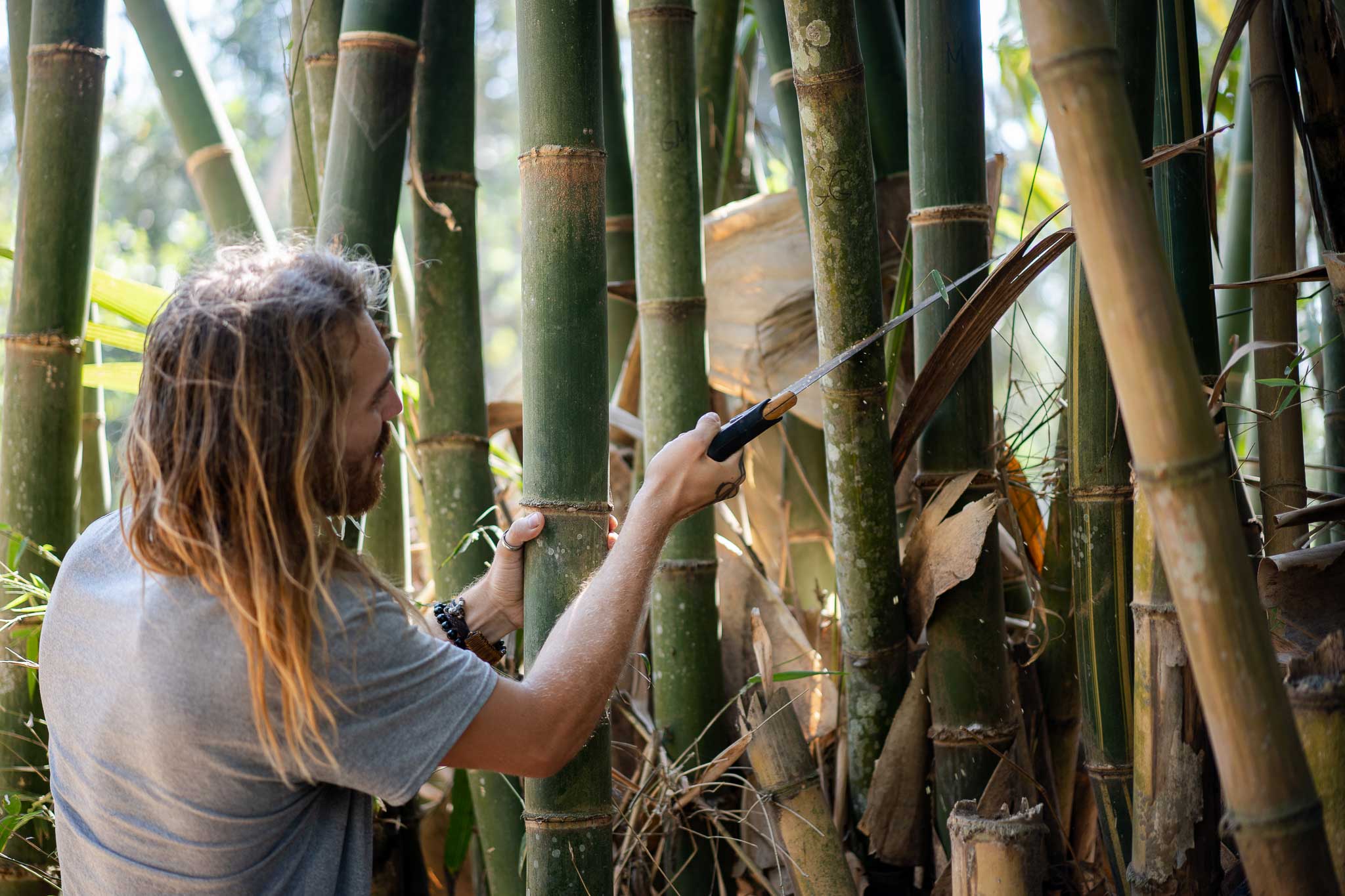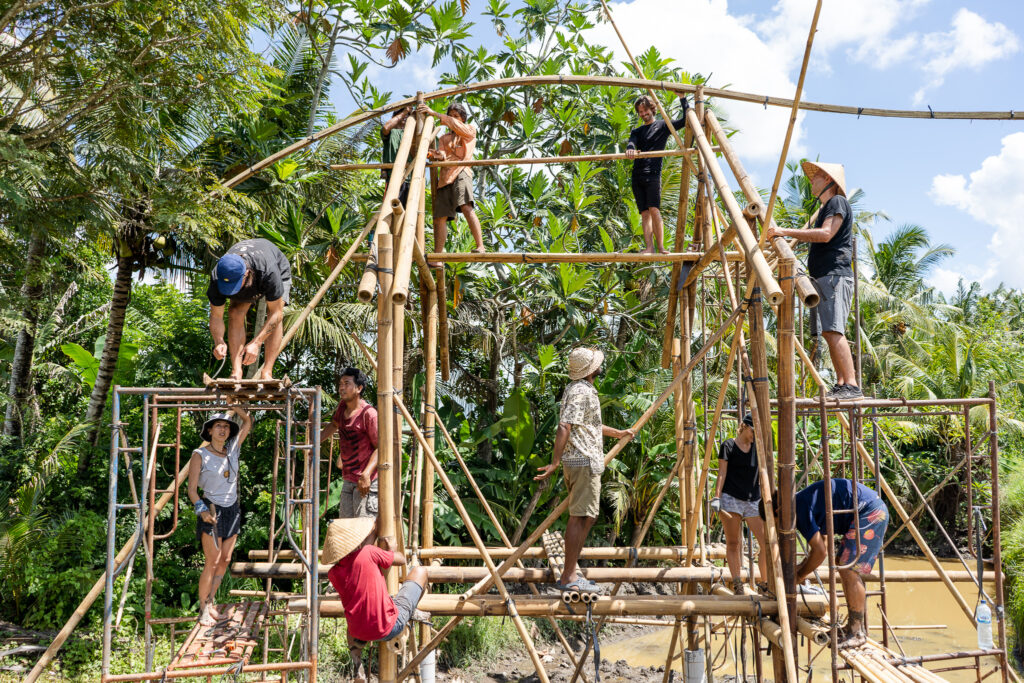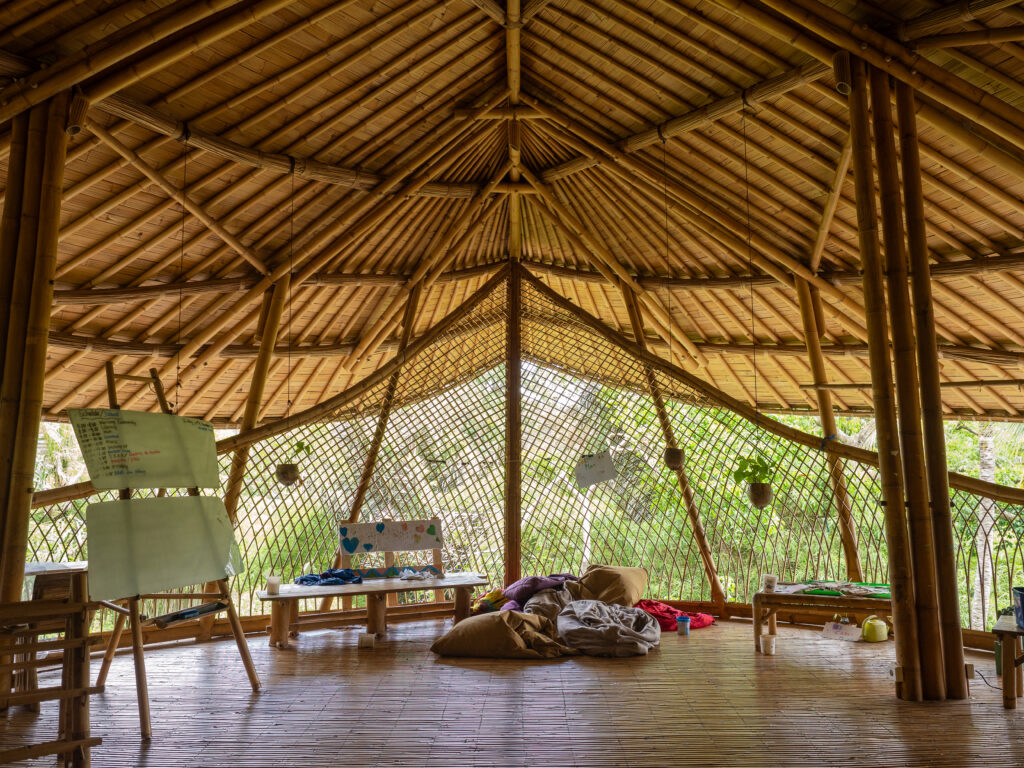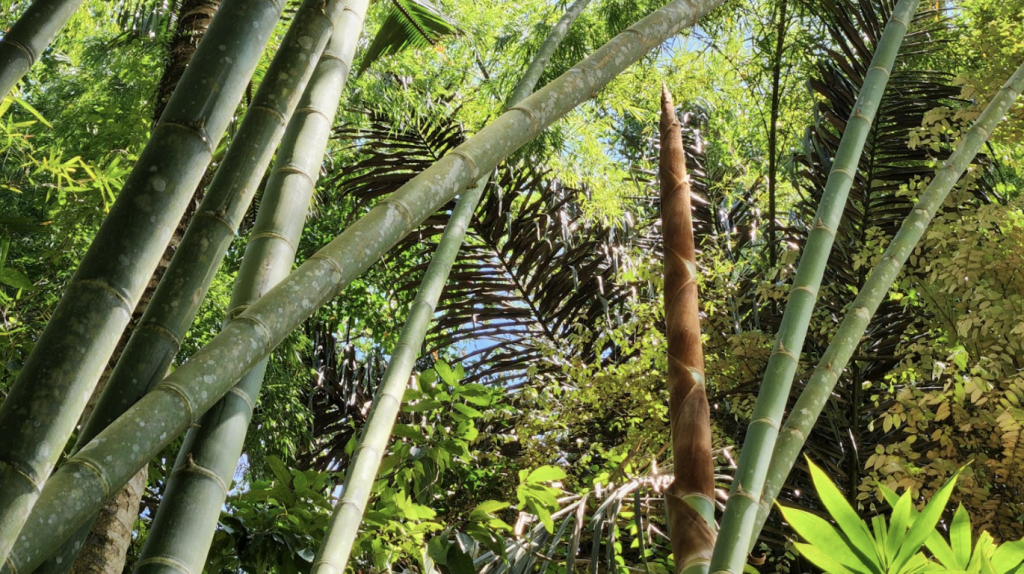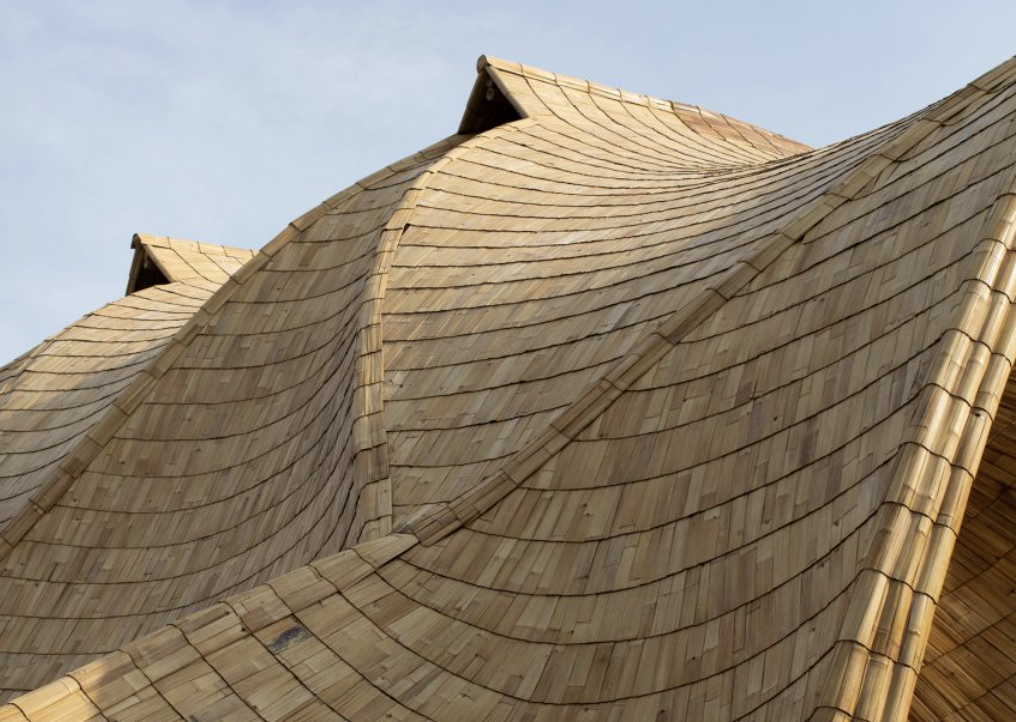It’s Time for Architects to Rediscover Natural Materials
By | May 14, 2025 | Construction -
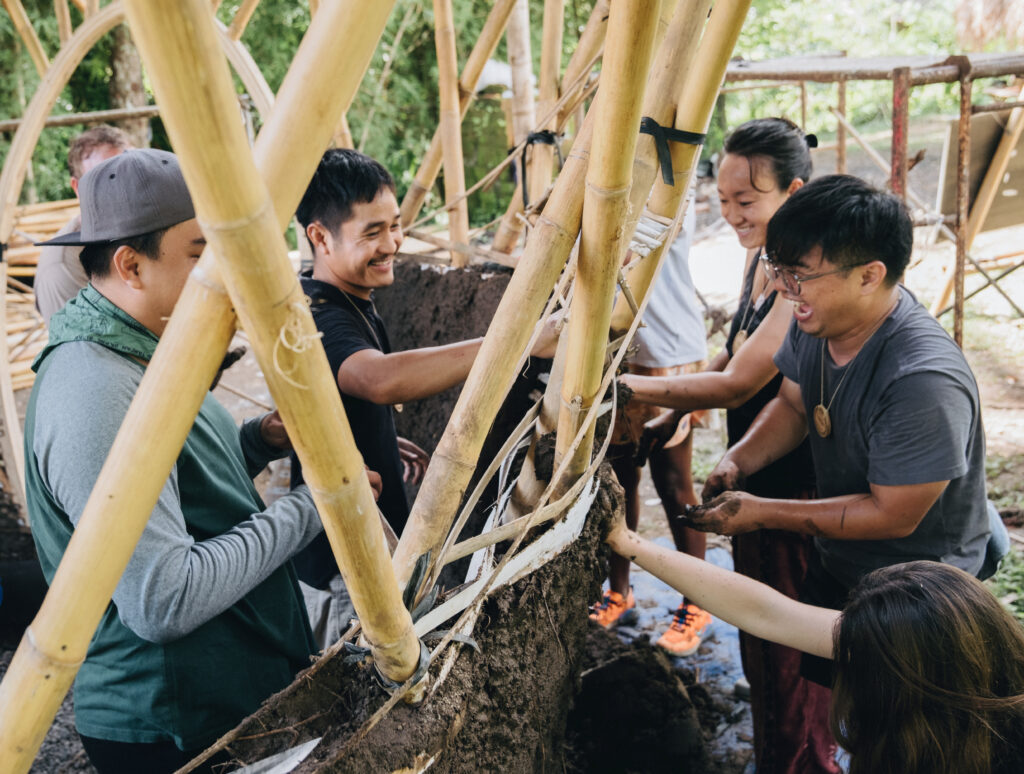
What if the key to sustainable architecture has been with us all along? All over the world, architects are being inspired to build with traditional materials. Not out of nostalgia, but to radically cut the embodied carbon of buildings, while creating something beautiful.
A United Nations Environment Programme (UNEP) report found the building sector’s emissions rebounded after COVID-19, reaching an all-time high (UNEP 2022). In fact, materials such as cement, steel, and aluminum are the biggest contributors to the building sector’s 37% share of global carbon emissions (UNEP 2023).
However, for most of human history, we only built with locally-sourced, natural materials. Materials such as timber, stone, earth, and bamboo were used in their raw forms without the need for carbon-intensive industrial processes. However, the industrial revolution disrupted these sustainable traditions. This led to the mass production of materials such as steel, concrete, and glass. Due to an emphasis on economic growth, efficiency and standardization, traditional ways of building have become marginalized over time (Pardo 2023).
Today, the pursuit of efficiency and standardization has only intensified. The construction industry has become further and further disconnected from low-impact, locally-adapted building practices that were once the norm. In the book Humanise, Thomas Heatherwick criticizes the way in which modernist architecture prioritizes cost-cutting and efficiency over the human experience. This contributes to faster demolition cycles, which consequently generate significant carbon emissions and waste. Heatherwick also critiques modernist architecture for its sterile qualities and lack of emotional engagement. He advocates for the use of natural materials that provide a sense of warmth and humanity that synthetic materials can lack (Heatherwick 2023).

Related: Vernacular Methods Of Treating Bamboo You Should Know
Heatherwick’s call for a return to warmth, emotion, and humanity in architecture finds a historical parallel in the work of Egyptian architect, Hassan Fathy. In the mid-20th century, Egyptian architect Hassan Fathy designed with traditional materials such as adobe and earth construction, demonstrating their viability and relevance within contemporary architectural practice. With revived interest in sustainable solutions, his work is just as relevant today.
Long before sustainability became a buzzword, Fathy was designing buildings that embodied these values through the use of traditional materials and techniques. His approach was not just about reducing carbon, but also about cultural relevance and community engagement – elements that Heatherwick argues are often missing from modernist architecture.
Fathy’s New Gourna Village, which finished construction in 1952, used traditional mud-brick building techniques and was built in collaboration with local skilled artisans. This project served to re-house people from a village called Gourna on the west bank of the Nile (Pyla 2007). The traditional skills once used in the area’s vernacular buildings had largely disappeared, allowing Fathy to use this opportunity to revitalize lost knowledge.
Although there were local laborers skilled in working with mud bricks, Fathy opted for a vaulted mud-brick construction system instead. This reduced costs by integrating the walls and roof into a single structural solution (Fathy 2010). This vaulted system and cheap mud bricks kept costs much lower than concrete would have (Miles 2006).
However, since the Gourna area lacked artisans experienced in building mud-brick vaults, skilled laborers from nearby also joined in the construction process. This way, Fathy demonstrated that traditional mud-brick construction could be successfully applied to a durable, cost-effective project. In this effect, he proved its viability as an alternative to conventional building materials.
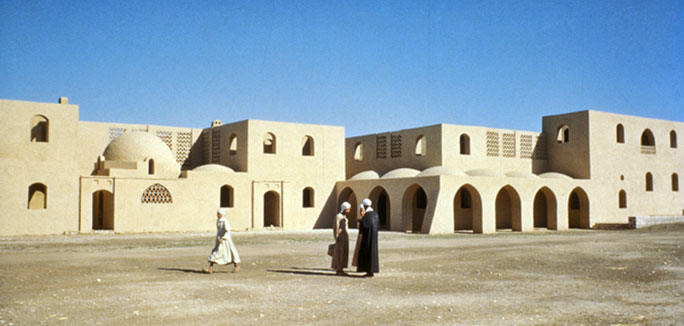
In more recent times, architects have continued to innovate with traditional materials and techniques to build structures that are sustainable and meet contemporary needs. An example of this is architect Anna Heringer’s METI School in Rudrapur, Bangladesh, completed in 2006. Heringer and her collaborator, Eike Roswag, used locally-sourced natural materials including mud and bamboo, and employed traditional construction methods to build the educational facility.
The project aimed to provide a safe, inspiring learning space for local children and empower the community by involving them in the construction process (Heringer). This community involvement is an aspect of vernacular building and something that Hassan Fathy also advocated for and encouraged. Through Heringer’s approach, this revived lost traditional building skills and demonstrated to those involved (and the world at large!) that it was possible to use local materials in a modern building. For example, the earth floors in the building provide natural insulation and remain cool despite the hot climate. Meanwhile, the use of bamboo on the top floor allows for ample natural light and ventilation.
As shown in this project, the vernacular architecture of an area is inherently well-suited to its location. This is due to its evolution over centuries to adapt to the local materials, climate, and cultural practices (Oliver 2007). These design choices also reflect Heringer’s values:
There have, however, been issues with the upkeep of the building post-occupancy. Over time, local communities in the area have lost much of the traditional knowledge required to maintain bamboo and earth buildings. Unfortunately, this is a common issue with buildings constructed from vernacular materials. Therefore, providing post-occupancy education on maintenance is essential for these types of buildings to last. Despite this, the METI School stands as an excellent example of how traditional techniques can be adapted to meet contemporary needs. This project tackles this goal, while prioritizing sustainability, community involvement, and cultural relevance.
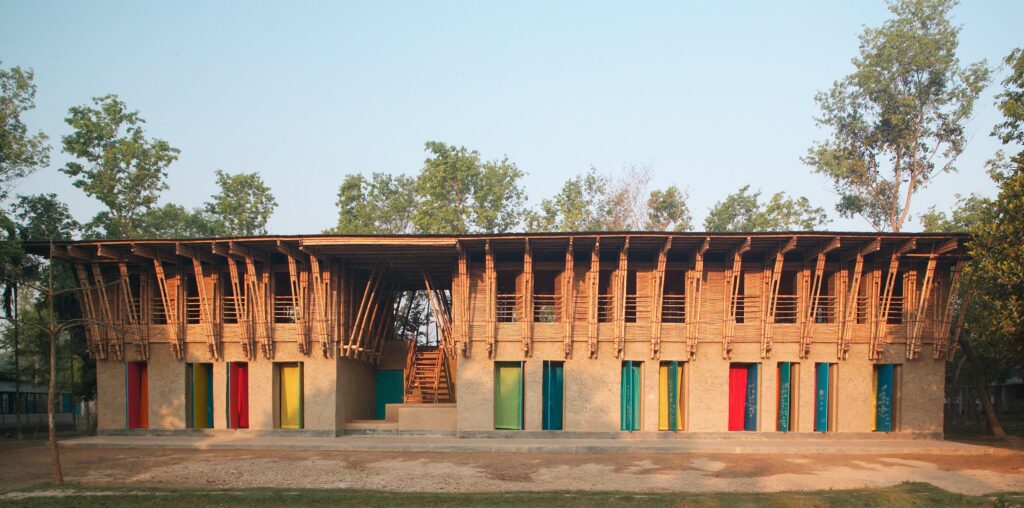
Related: How We Built An Amazing, Low-cost Bamboo And Mud Yurt
Estudio Carroll’s project, completed in 2023 in Puerto Escondido, Mexico, uses a traditional Mayan technique called Chukum stucco to clad a hotel in a contemporary style (Mazade 2024). The chukum tree is a semi-hardwood tree that grows in the Yucatán Peninsula in southeast Mexico. Chukum stucco is made by boiling bark from the chukum tree twice and adding limestone. The mixture gives walls some water resistance, durability, and a distinctive earthy-pink hue. By using chukum stucco in a beautiful and modern way, Estudio Carroll are inspiring others to do the same. As a result, indigenous knowledge is preserved and celebrated, while reliance on imported materials is reduced.
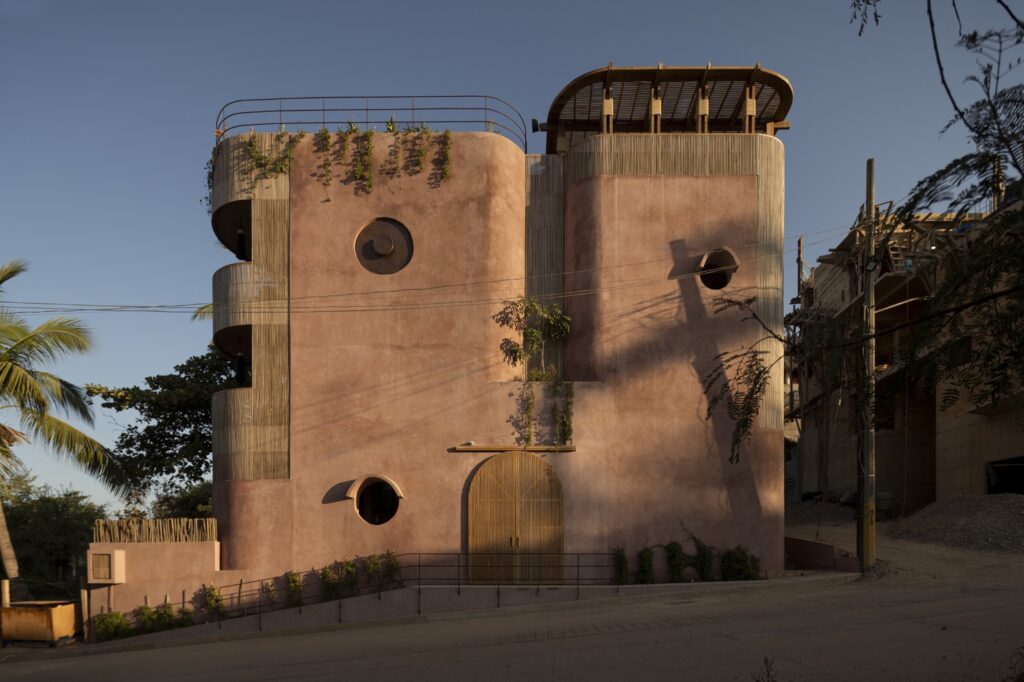
Although there are many great reasons as to why you would choose to build with vernacular materials, it is not always easy. Challenges can include issues with modern building codes, a shortage of skilled laborers familiar with the techniques, and people’s concerns (often misinformed) over whether the materials can meet contemporary climatic and structural demands. The adaptation of traditional local building techniques also raises questions about intellectual property and the commercialization of Indigenous knowledge. As architects look to use vernacular techniques to create sustainable architectural solutions, the communities that created and preserved these methods must be fairly compensated and acknowledged.
Sources
Fathy, Hassan. 2010. Architecture for the Poor. University of Chicago Press.
Heatherwick, Thomas. 2023. Humanise. Random House.
Heringer, Anna. n.d. “Anna Heringer.” Accessed March 31, 2025. https://www.anna-heringer.com/.
Mazade, Kate. 2024. “Estudio Carroll Clads Rounded Mexican Hotel in Pink Chukum.” Dezeen, March 26, 2024. Accessed March 31, 2025. https://www.dezeen.com/2024/01/15/estudio-carroll-mexican-hotel-chukum/.
Miles, Malcolm. 2006. “Utopias of Mud? Hassan Fathy and Alternative Modernisms.” Space and Culture 9 (2):115–39. https://doi.org/10.1177/1206331205285852.
Oliver, Paul. 2007. Built to Meet Needs: Cultural Issues in Vernacular Architecture. Routledge.
Pardo, José María Fuentes. 2023. “Challenges and Current Research Trends for Vernacular Architecture in a Global World: A Literature Review.” Buildings 13 (1): 162.
Pyla, Panayiota I. 2007. “Hassan Fathy Revisited: Postwar Discourses on Science, Development, and Vernacular Architecture.” Journal of Architectural Education 60 (3): 28–39. doi:10.1111/j.1531-314X.2007.00093.x.
United Nations Environment Programme. 2022. 2022 Global Status Report for Buildings and Construction. Nairobi: UNEP.
United Nations Environment Programme. 2023. Building Materials And The Climate: Constructing A New Future.
All images are property of the original owners.
Interested in learning more about traditional and contemporary ways of building with bamboo? Join one of our courses HERE!


